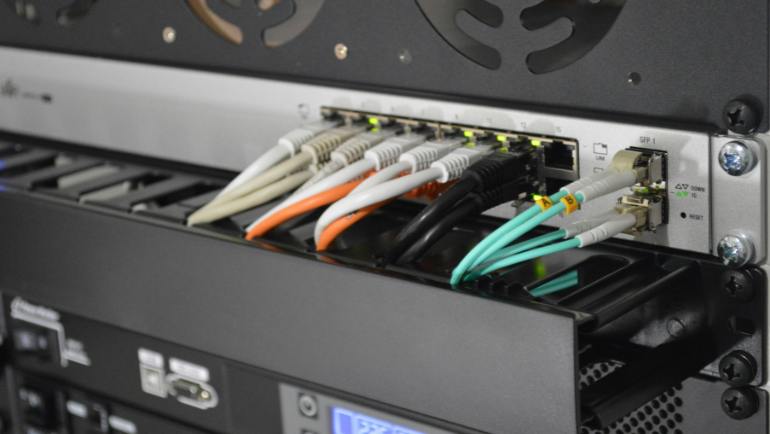
Tape drives have removable cartridges and are less prone to failure, allowing long-term data retention with high transfer rates. They store data magnetically on tape at lower prices than all other storage drives today.
The use of tape drives has grown exponentially since the data has become more critical than ever. Let’s explore more about tape drives and their types to understand them properly.
What is a Tape Drive?
The oldest electronic storage media consists of flexible plastic coated with ferromagnetic material to store data. Tape storage comes in many sizes and shapes like helical or liner tape drives.
Enterprises use these types of storage to save critical data with a lower carbon footprint for a longer time. However, a controlled environment, such as humidity levels or temperature, is required for tape storage for which you may have to buy cooling fans or heat sinks.
Types of Tape Drives?
Tape stores data sequentially, unlike rotating disks and flash memory technology. They are stacked in data center racks or come as standalone solutions, often housed in a sealed cassette. Higher storage capacities, longer durability, lower cost, and no online copy make them a sought-after product for saving data in enterprises.
Linear Tape Open (LTO)
The most common type, half-inch magnetic tape, reads and writes data in parallel lines. Open-format technology makes them compatible with drives from different manufacturers. It has a 0.5-inch tape with error modification, data compression, and a high transfer rate.
Helical Scan Tape
Designed for video recording applications, using 8 mm tape, 25 inches wide. Unlike linear tape, they write in diagonal strips along the tape on two reels. It holds less data than LTO and was primarily used in storage networking environments. Today, it has been replaced mainly by AIT, LTO & DLT tape technologies.
Digital Linear Tape (DLT)
After LTO, this is the most preferred magnetic tape storage, with a transfer speed of 60 MB/s. However, the latest super DLT brought significant improvements in performance. Now, small to medium-sized systems prefer this drive with higher and better speeds.
Digital Audio Tape (DAT)
DAT, or DDS, is used as a backup storage drive for high-capacity data storage requirements. DAT is a compact and affordable solution with data formats and generations. However, it requires regular monitoring to prevent damage and ensure proper storage. This causes unreliability and impaired data integrity in critical backup solutions.
Advanced Intelligent Tape (AIT)
It provides enormous data storage capacity with a 3rd-level error code guarantee. AIT has high data reliability and data compression, such as 260 GB on 230m tape length. The stored data is automatically checked for compression without configuration. However, avoiding high-temperature humidity, shock, and vibration is essential for proper functionality.
Strength & Weakness of Tape Drives
Strength:
- Reduce Cost: Large organizations prefer tape drives over other drives to archive data. Tape drives are more cost-effective than other storage devices as they offer lower cost per gigabyte of data stored
- Efficiency: It archives data by storing it offline and works during reading and writing data or on an as-needed basis. It consumes less energy, unlike cloud or disk storage, making it much more efficient
- Reliable Storage: Provide a reliable data archive that can withstand years without damage if handled properly. Also, tape drives are easily transportable as the data is stored in cartridges
- Security: It protects data from ransomware or malware as it is completely offline. The tape cartridge not connected to the system is unreachable by hackers. It is more effective than cloud storage which is more exposed to online threats
- Disaster recovery: In case of system failure or cyber attack the cartridges can easily
detached from the system, creating an air gap b/w the system and the data. Most enterprises buy Raid controllers to group multiple tape drives to provide fault tolerance in case of a drive failure; another drive will take its place.
Weakness:
- Low Speed: the data is sequentially written on the tapes which reduces its speed, and backing or restoring up large amounts of data can be time-consuming increasing downtime
- Lengthy Access: You can’t access data randomly like hard drives. And no way to find which cartridges hold the information required unless labeled.
- Shoe-shining: Tape drives spin fast and perform back-and-forth motions to find the point where the data is. This motion resembles the action of shining a shoe and wearing out the tape
- Start-stop Operation: The computer tape stores the data by accumulating it in buffers. If the buffers are full the tape may be stopped cutting overall processing efficiency
The Need for Tape Drives
Today, the capacity of tape drives has increased to multiple terra bytes with a faster speed of 400 megabytes per second. Also, they are cost-effective, more secure, and longer lifespan than other storage devices. The need for tape drives grows exponentially as cyber threats continue to rise, and enterprises prefer archiving their sensitive data offline.
Which Tape Drive To Choose?
Buying storage devices requires careful consideration of factors like requirements, budget, and purpose. Enterprises mostly prefer DAT tape storage for its balanced performance, while AIT offers ECC which makes data backup more secure. Also, the tape drives may or may not come with hot swapping features, it’s best to look into the specification before buying.
All aforementioned magnetic tape data storages have unique features in different enterprise applications. Careful consideration is needed before choosing anyone. Computing Worlds offers a wide range of new, used & refurbished tape drives for sale, some of the best are as follows:
Popular Tape Drives for Sale:
You can also request a bulk quote online for the top tape drives.
Frequently Ask Questions
Is Tape Storage Still Used?
Yes, tape storage solutions are still relevant and used in large organizations for data archiving.
How Much Does Tape Drive Cost?
The price of PC tape drives ranges from $46 to $6,700. It varies depending on quality, storage, & more.
What is Virtual Tape Storage?
A Virtual Tape System (VTS) backup data virtually in cloud storage or virtual cartridges.
Computer tape drives are reliable & cost-effective solutions for long-term data backups. From low cost per gigabyte of data transfer to high transfer rates, making them ideal for data-centric industries. It is always recommended to gather all the facts before buying internal hard drives or exploring other storage accessories for sale.
Stay tuned to Computing Worlds blogs for more informational content.






